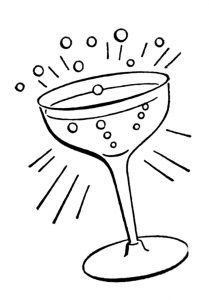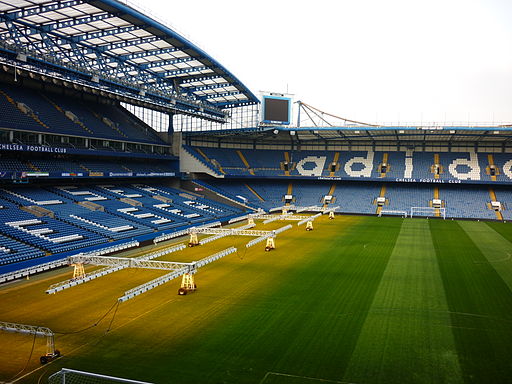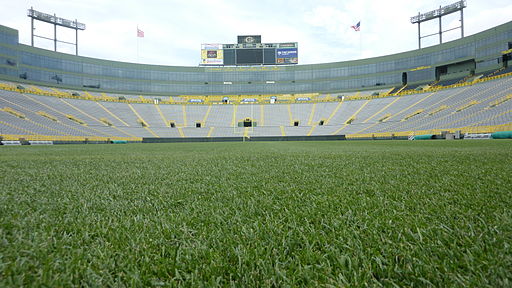The first frost of fall was
late this year across much of the U.S., in some places by one to three weeks, depending on
the source of average frost date information. People who spend a lot of time outdoors tend to notice this, and also that a trend has developed of fall frosts arriving later and the last frost of spring coming earlier. Even people who pay attention to climate only sporadically may have noted the
muted fall colors of the trees this year in parts of the eastern U.S., a result of extended warm weather and drought.
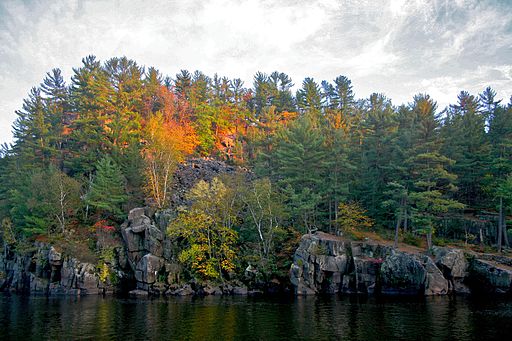 Fall Colors, Interstate State Park, Wisconsin and Minnesota;
photo by Tony Webster
Fall Colors, Interstate State Park, Wisconsin and Minnesota;
photo by Tony Webster
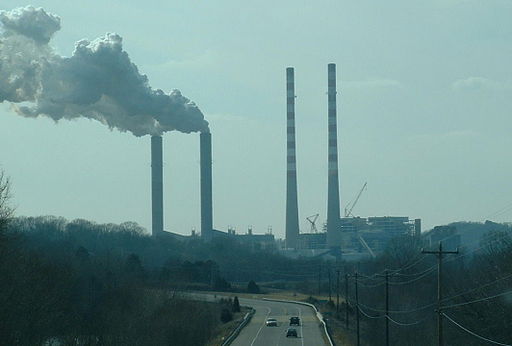 Cumberland Power Plant smokestacks,
Cumberland, Tennessee;
photo by Steven Greenwood
Cumberland Power Plant smokestacks,
Cumberland, Tennessee;
photo by Steven GreenwoodThe growing season has increased over the last forty years or so, but that is not necessarily a good thing considering that short-lived creatures, such as insects, adapt more readily to swift changes than longer-lived plants and vertebrate creatures. Forty years is swift in the long view of climate. The short view is called weather, or weather events. Adding up weather events over forty years plots
a trend in the climate. Unfortunately for the sake of rational discussion, too many people fail to make the distinction between weather and climate.
Not everyone agrees that the climate is getting warmer, or that if it is then humans are the cause of it. Some of those climate change deniers are motivated by their religious beliefs, others by
a suspicion of government regulators, and still others are unmoved by the weight of scientific evidence, citing doubt about the conclusions. Who has sown that doubt? As always, we are well advised to
follow the money. It comes as no surprise then that Big Oil, following the example set by Big Tobacco with regard to the link between burning their products and cancer, has worked to sow doubt about how the burning of fossil fuels contributes greenhouse gases to the atmosphere and causes a warming climate. Where there is doubt, they know, effective action against them can be hamstrung, and profits will continue to roll in until we all burn up from second hand smoke on a global scale.
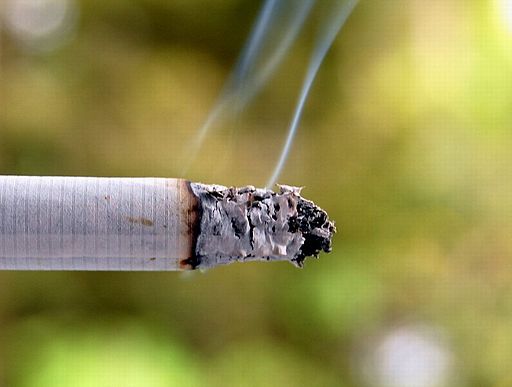 Cigarette smoke; photo by Flickr user Challiyan
Cigarette smoke; photo by Flickr user Challiyan
Again following the money, the insurance industry is coming around to the reality of global warming and the increase in expensive weather events it is causing. The insurance industry, conservative gamblers that they are, are most interested in the economic facts they can pin down so as to minimize risk and maximize profit. They are not swayed by emotional appeals to religious or political views, but only by appeals to their bottom line. Another group whose costs are affected by the results of global warming are states and municipalities. As
seas rise and severe weather events increase, causing unprecedented flooding, these entities have to pay for infrastructure improvements and higher insurance premiums.
States’ attorneys general are beginning to go after the fossil fuel industry to recoup costs, much as they did to the tobacco industry in the 1990s. It will be an even more protracted fight in this case because of the gargantuan amounts of money the fossil fuel giants can bring to bear; not everyone smoked in years past, after all, but today practically everyone uses gas, electricity, natural gas, plastics, and the list of products goes on. Some of these products can be replaced by use of renewable resources like wind and solar, but ultimately, like the reduction in use of tobacco products due to increasing social opprobrium, the steps for overcoming reliance on fossil fuel products and thereby breaking the economic stranglehold of Big Oil need to be taken by consumers, and that will require some wholesale changes in lifestyle, especially in
the industrialized nations.
– Izzy

